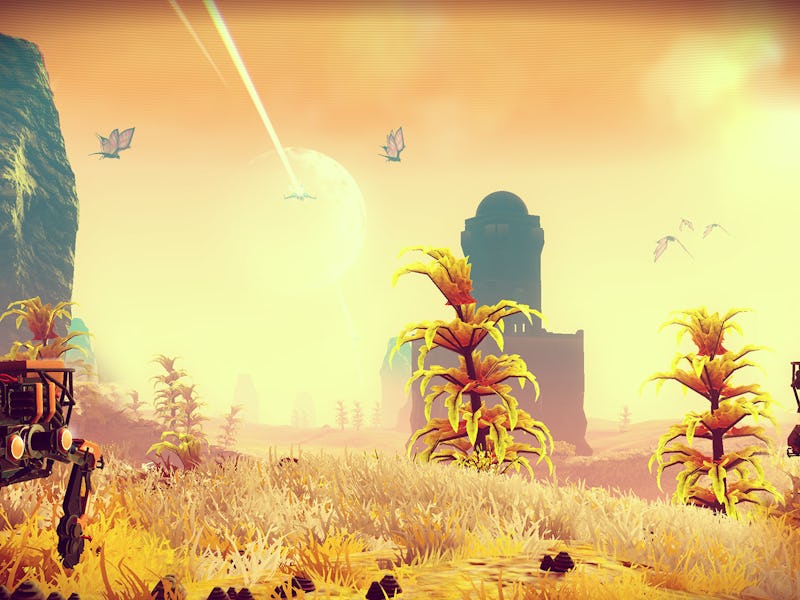'No Man's Sky' Could Save the Dying Art of Machinima by Making It Less Dumb
18 quintillion worlds and just as many backdrops.

In 2003, a group of Texas gamers would would be come to be known collectively as Rooster Teeth uploaded a three-minute video in which armored Spartans, hulking space soldiers, pondered the meaning of life. Halo: Combat Evolved avatars were used as puppets and the filmmakers’ own voices provided dialogue. Titled “Why Are We Here?,” the clip went viral before that was a thing that clops did.
In hindsight, the central question the soldiers asked seems eerily prescient. But it’s a question the leaders of the machinima movement never really answered. The production of episodes for shows like Red vs. Blue took priority over the mulling of big ideas.
Today, machinima is a cultural wasteland, an art form made by and for Minecraft-loving Matt Parker and Trey Stone wannabes. Something substantive needs to change for it to retain anything resembling relevance. And, fortunately for filmmakers, something substantive is about to change. Led by No Man’s Sky, video games are about to present more space and opportunity to be creative. The canvas is getting bigger (and also holding the paint a bit better).
To get a sense of what No Man’s Sky could mean for machinima, it’s helpful to look Bungie’s Forge, a technology that allowed players to easily make the whole world of Halo 3 a stage. Introduced after machinima went mainstream, Forge was an all-in-one tool designed to encourage people to make skits and videos, which mostly made their way to YouTube.
Machinima got easy and then it got bad. Red vs. Blue wasn’t the apex of comedy, but Rooster Teeth knew how to play to their strengths and downplay weaknesses. Most people posting stuff to YouTube didn’t. Saturation happened. Today, Twitch dominates the game-centric video market and Rooster Teeth have expanded to making actual movies. Their sci-fi action comedy Lazer Team made its premiere at the 2015 Fantastic Fest last September. In a sense, that was the end of Machinima.
Smash cut to No Man’s Sky.
The space exploration game coming this June will provide literally quintillions of planets open for exploration. It has limits, sure, but consider the tools in No Man’s Sky waiting to be used by filmmakers: spaceships, weaponry, expansive scenery, countless creatures, and open space. Procedurally generated worlds can allow for real location spotting and differentiated visuals. Also, the game isn’t just about shooting stuff, which opens up the narrative possibilities.
It does not, however, provide that much freedom. Unlike most games used for machinima, No Man’s Sky presents logistical issues. For one, player’s will have to find each other. They will also have to figure out how to interact dynamically, which is less of a focus of NMS gameplay. There are, realistically, only so many stories about space exploration the internet wants to watch. Though a languid romance set among dinosaurs obviously has potential, as well.
'No Man's Sky' or pre-production still for a virtual 'Dune' remake?
Even if No Man’s Sky doesn’t revive machinima more broadly, someone absolutely will make something good out of this thing. And, when they do, it will be an interesting moment for fans of the genre and for the film industry more generally. These sort of pre-programmed virtual worlds could and likely will offer studios the opportunity to make science fiction narratives without having to reinvent the universe every damn time. For independent filmmakers, the technology behind No Man’s Sky could open up a narrative possibilities currently out of financial reach. In a sense, that’s what Halo 3 and Forge did. That technology was simply more limited.
All that said, machinima makers have so thoroughly alienated their old fans that the real possibility NMS may present is the opportunity to attract new viewers with a substantively different product. Machinima could go mainstream again, but it won’t do so as a shoot-’em-up.